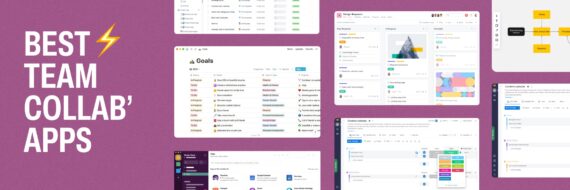Improving the user experience of a web project requires data and lots of it. You need to know what the user wants if you plan to create a website that entertains or moves them to action. Great user experience is what separates a high-converting website from a mere website with a lot of visitors. Therefore, improving UX should be at the forefront of every web designer’s brain.
There are plenty of ways to learn about a website user. You can observe them or ask them, but the more reasonable approach is to collect data via web analytics tools.
How to improve UX with web analytics tools
User-experience design involves creating something users love, and analytics help designers understand what that elusive thing is. Analytics give designers measurable benchmarks – that magic point that anyone can look at and say, “yeah, that’s not working.”
There are four types of analytics:
- Descriptive analytics that show how many and how often
- Diagnostic analytics that track over time and reveal trends
- Prescriptive analytics that look at trends and determine optimal patterns
- Predictive analytics that test out scenarios and make suggestions
Today’s web analytics tools can do all four. When combined with a process of research, measurement, and analyzation, designers can easily create and maintain UX-friendly projects that perform well. You’ll need to start by determining your key performance indicators (KPIs). These are basically predefined measurements of success and are often intertwined with marketing goals. However, in design, KPIs are more fluid and should be measured over time, rather than as a benchmark goal.
For a full tutorial on improving UX with analytics, read this UX Booth article. In the meanwhile, here are five tools to help you collect the data you’ll need.
Google Analytics

Google Analytics is one of the most popular web analytics tools for a good reason – it’s powerful and free. There is also a premium version called Google Analytics 360 that is designed for enterprise use. It includes more support for prescriptive and predictive analytics; however, any site with less than 10,000 monthly visitors can still use the free version.
Google Analytics is a versatile tool. Although many people use it for internet marketing, it can just as easily be used to improve the user experience of a site when observed over time. Use Google Analytics to follow trends, keep track of errors, and understand user flow. All that’s needed is some setup from you and a little bit of JavaScript on your site.
As easy as it is to deploy, Google Analytics does have its drawbacks. First of all, many people have difficulty interpreting its data. It also can take a while to update, and there’s little to no support. There are also concerns about how Google uses the data it collects.
Despite these small things, Google Analytics does a great job of collecting data that designers can use to identify ways to improve the user experience of a website. When part of an overall focus on user-experience (or combined with other web analytics tools), it is more than enough.
Traffic: up to 10 million data points/month
Cost: Free
Analytics provided: Descriptive, Diagnostic, Prescriptive (with training)
🎬 Learn what Slickplan can do!
We filmed a short video to show you exactly how to use Slickplan
Mixpanel

Like Google Analytics, Mixpanel also tracks website visitors, but it is a lot more targeted about the practice. Instead of the automated, generalized tracking that is offered by Google, Mixpanel lets designers focus on specific events performed by users. Cost – wise, it provides a lot while not being the most expensive, there is also a free option.
We should point out that Google Analytics also tracks events; it just doesn’t do it as effectively as Mixpanel. In fact, a motivated researcher could theoretically do the same thing with Google Analytics, but it will take more time, and it will be easier on Mixpanel due to their excellent UI. The two web analytics tools also differ in the type websites they best serve. Google Analytics is optimized for e-commerce sites, whereas Mixpanel is extremely useful for websites seeking conversions.
Using Mixpanel, UX researchers can deep dive into web data to find specific, actionable answers to questions such as, “how many people click the buy now button after reading the product reviews page?” The data gathered from this event helps UX designers understand what needs to be changed to increase the number of sales of a particular item.
Some might say that the information gathered by Mixpanel focuses too heavily on inference to be reliable. This might be true if a website relied too heavily on Mixpanel to improve the user experience. The best way to use Mixpanel is alongside other web analytics tools. That way researchers can compare the data manually and gauge the validity of the conclusions Mixpanel makes. Like Google Analytics, Mixpanel on its own is not the solution for better user experience; however, it is definitely a powerful tool.
Traffic: up to 1 million data points/month
Cost: Free with 60 days of data; $150/month otherwise
Analytics provided: Descriptive, Diagnostic, Prescriptive (in paid)
AgencyAnalytics

AgencyAnalytics is a versatile tool designed specifically for marketing agencies, enabling them to track a wide range of marketing metrics from over 80 popular platforms, including Google Analytics, Semrush, Mailchimp, Facebook Ads, and more. The platform’s intuitive features allow marketers to quickly create custom reports and dashboards—within seconds—making it easier to identify website issues in real time and implement adjustments as needed.
With ready-made report templates tailored for website analytics, AgencyAnalytics helps streamline the reporting process, ensuring that key data points are automatically compiled for client presentations. The recently added Ask AI feature enhances the platform by providing instant answers to specific questions, delivering actionable insights that can drive client reports and strategies while uncovering trends, growth opportunities, and challenges—all in one search.
Cost: Plans start at $59/month (billed annually) for up to 5 client campaigns.
Analytics Provided: Descriptive, diagnostic, and prescriptive analytics.
Kissmetrics
![]()
Kissmetrics is one of the more expensive web analytics tools on the market, but when it comes to collecting data to improve user experience, it is well worth the price tag. Like Mixpanel, Kissmetrics offers advanced customer analytics. The tool collects multiple points of data and segments it into the actions of a specific user. If you want to figure out how users are traveling through your site, simply select “analyze customer behavior,” and Kissmetrics does the rest.
Like Mixpanel, Kissmetrics is very useful for increasing conversions, and as a result, is a favorite resource for internet marketers. It’s also ideal for large organizations and web design teams because it provides powerful tools for both designers and marketers. It especially excels at creating customer behavior reports that UX designers can use to optimize their websites.
In terms of UX data, Kissmetrics isn’t as detailed as Mixpanel, but it does give more information than Google Analytics. As a tool for improving UX, Kissmetrics provides a good balance between bare-bones data and packaged interpretations of data. If your organization doesn’t mind a slight learning curve, in exchange for a vast amount of website analytics, Kissmetrics is a perfect choice.
Traffic: up to 250,000 data points/month
Cost: Starts at $500/month, but there is a free trial
Analytics provided: Descriptive, Diagnostic, Prescriptive, Predictive
Think visually. Improve UX with Slickplan
Build intuitive user flows, stronger customer journeys and improve information architecture.
Piwik Analytics
![]()
The first thing that you should know about Piwik is that it is no longer Piwik. The company changed their name, but not their product at the beginning of 2018. It is now called Matomo, which is Japanese for honesty. Piwik (now Matomo) is an open source analytics project that rivals Google Analytics but has a greater amount of protection for consumer privacy. As an open source project, it is free to use, with plenty of room for customization.
The company also chose this name in an effort to separate themselves from a separate company, Piwik Pro. Piwik Pro is built on the Piwik platform but is designed for enterprise support and is not free. Like Kissmetrics, it also includes features that are best suited for marketing purposes. However, it is unique in its ability to maintain consumer privacy while simultaneously collecting useful data for websites.
For many organizations, consumer privacy is essential when considering web analytics tools. The most popular tool, Google Analytics, collects customer information, but it also shares that information with third parties. Certain websites, like those that must maintain HIPPA or GDPR compliancy, are not allowed to share data with third parties. Matomo and Piwik Pro offer a legal alternative. Open source Matomo also has the additional benefit of being customizable.
Traffic: unlimited
Cost: Matomo is free, Piwik Pro is not.
Analytics provided: Descriptive, Diagnostic, Prescriptive (in Piwik Pro)






 X
X

